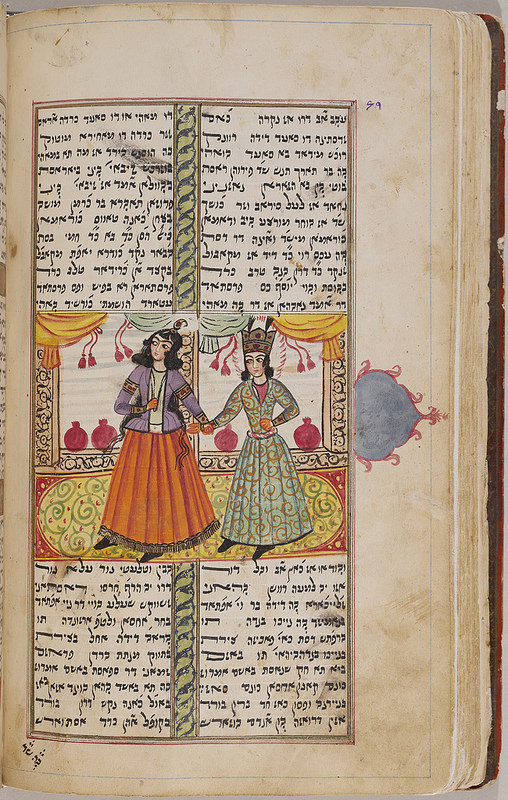
© Turfanforschung (BBAW), Digitales Turfan-Archiv
Pehlivanian, Meliné, Christoph Rauch & Ronny Vollandt (eds.). 2016. Orientalische Bibelhandschriften aus der Staatsbibliothek zu Berlin – PK. Eine illustrierte Geschichte. Wiesbaden: Reichert Verlag.
The volume presents an illustrated history of the Oriental Bible Manuscripts from the Staatsbibliothek zu Berlin. It includes discriptions of the manuscripts which are among the oldest and most fascinating items in the Oriental Collection of the State Library of Berlin. The overwhelming majority of the manuscripts presented here come from the very cradle of the Abrahamic religions. The texts range across more than 1,500 years of Christian and Jewish history in the Near and Middle East and Africa, from Late Antiquity to the 19th century.
They are written documents which have, not least, also left
traces in the Islamic tradition. Another concern of the volume is to allow readers insights into the extremely extensive and varied collection of Oriental manuscripts in the Staatsbibliothek zu Berlin, whose outstanding treasures are in many cases only known to specialists in the field. The biblical texts, written on leather, parchment, papyrus, and paper bear witness not only to the complexity of the religious and theological traditions, but also impressively document the diversity of materials to be found in the Oriental manuscript culture, and not least the artistic achievements of the “Peoples of the Book”.
Some most related chapters of this book regarding the Iranian Studies are:
- Dennis Halft OP: “The ‘Book of Books’ in Persian” (pp. 150-154)
- Dennis Halft OP: “A Persian Gospel Manuscript and the London Polyglot” (pp. 155-157.)
- Desmond Durkin-Meisterernst: “A Middle Persian Pahlavi Psalter-Fragment in the Berlin Turfan Collection” (pp. 114-116).
- Simone-Christiane Raschmann: “Christian Texts from Central Asia in the Berlin Turfan Collection” (pp. 105-113).
- Friederike Weis: “Illustrated Persian Tales of the Prophets (Qis.as. al-anbiyāʾ) (pp. 163-172).


 McCollum, Adam. 2015.
McCollum, Adam. 2015. 
 Utas, Bo. 2013.
Utas, Bo. 2013.  Moreen, Vera Basch (ed.). 2015.
Moreen, Vera Basch (ed.). 2015.  Paul, Ludwig. 2013.
Paul, Ludwig. 2013.